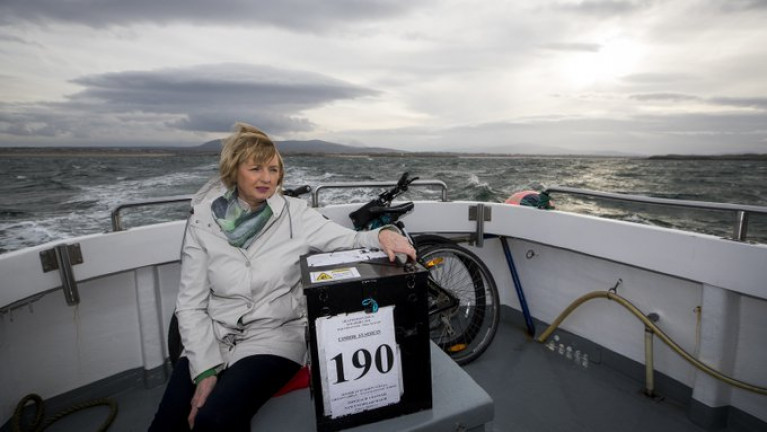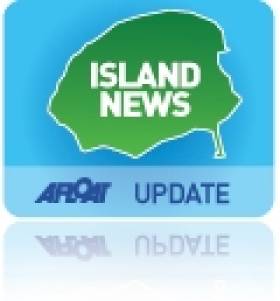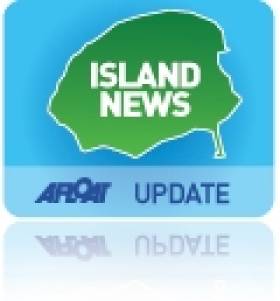Displaying items by tag: islanders
First Ballots Cast by Islanders In General Election
On islands off the coasts of Galway, Mayo and Donegal, people are casting their votes in the General Election today.
It had been expected that the European and local elections held in May of last year would be the final time that islanders would vote ahead of the rest of the country.
However, legislation to allow islanders vote on the same day as other voters, despite having gone through second stage in the Dáil, had not been passed by the time the General Election was called.
Traditionally islanders voted ahead of the rest of the country to ensure that bad weather did not hamper the return of ballot boxes to the mainland in time for the count.
For more RTE News reports.
TV Premiere of ‘Islanders’ Airs Wednesday at 9pm on TV3
#islanderstv3 – Islanders is an emotional TV series following the lives of native islanders across an entire year. Filmed in 2014, this observational documentary is the biggest in-house production undertaken by 3Studios. From Arranmore, Co. Donegal via Inishturk in Co. Mayo to Whiddy in Co.Cork, this four part series captures a way-of-life rapidly disappearing.
As reported by Afloat back last month, the series is set within breath-taking landscapes, the islanders' stories are emotive, uplifting and told with honesty and frankness. Narrated by Irish actor Andrew Bennett ('Angela's Ashes', 'Garage', 'The Stag'), this is a landmark series for TV3, supported by the BAI.
Episode 1 begins 14 kilometres out from the Mayo coast, where the beautiful island of Inishturk reveals itself. With just 55 residents, it is home to Bríd Heanue (33) and her son Nathan (12). Bríd's eldest son Chris (16) lives and schools on the mainland.
With no secondary school on Inishturk Nathan will be leaving the island in September to join his brother at Rice College in Westport. It is a day Bríd dreads.
"In September, Nathan is leaving to go to school. That's a very emotional subject with me. It's going to be heart-breaking for me as he's been my little baby here at home. I'm going to find that very hard. All of our family are going to find that hard."
Nathan's leaving in September is going to affect the whole family – his mother will be losing her son, whilst the island will be losing another islander.
The series premiere also brings us down the coast to County Cork and in Bantry Bay, Whiddy island is the home place of twenty-two people. Here we meet two contrasting brothers: fisherman Danny O'Leary (51) and his brother Tim O'Leary (44), who is the islands publican, ferryman and post-man.
Last year the brothers got a rude awakening when they travelled to Inis Oirr on the Aran Islands for the first time. They were taken aback that other islanders had never heard of Whiddy. The few that had heard of Whiddy didn't think there were people living and working on it. The brothers were shocked and when they returned home they vowed to put their island and community back on the map.
Northwards, in the Donegal Gaeltacht, sits the stunning island of Arranmore. Just three kilometres from the coast, Arranmore has two car ferries, two co-operatives, a fire-service, a secondary school and even a nightclub! Outwardly it seems perfect but it has a problem, a problem emblematic of many islands – its population is in swift decline.
Dr Shirley Gallagher (early 40s) is a typical Arranmore Islander, born off the island in London whilst her island parents were working there, the family were reared on Arranmore. Shirley is well-travelled, well-educated and well able to speak her mind. Working in Sustainability & Environmental issues, Shirley returned home two years ago to apply all her learning and experience to her own home. She believes there are those on the island that don't want to see change whilst others are apathetic:
"When I saw the statistics on population decline I was truly shocked. You see the empty houses and derelict homes all around the place but it didn't really trigger. I thought I need to do something about this – and here I am."
Also a resident of Arranmore is mild-mannered fisherman Neilie Kavanagh (mid 40s). Although preparing for the busy season ahead, Neilie is heartbroken over the decline of the inshore fishing industry in Arranmore. The 'injustice' of what has happened to his fishing village is deeply felt and it is hard not to feel sympathy for him. He explains the Catch-22 of the 'harsh regulations'. If he is caught fishing illegally his licence will be revoked and his father's family boat will no longer be able to fish. He is the custodian of the boat – the St. Anthony, built by his father on Arranmore over 40 years ago. Neilie has never worked or lived off Arranmore.
With many twists and turns along the way, Islanders will follow the lives and stories of these characters over a tumultuous year, to learn what threatens their survival, to discover a different way of life, and to share in what it means to be an islander.
The series premiere of 'Islanders' airs this Wednesday at 9pm on TV3.
TV Documentary Series 'Islanders' Premieres in April
#islandlife – Coming to TV3 in April, Islanders is an emotional series following the lives of native islanders across an entire year. Filmed in 2014, this observational documentary is the biggest in-house production undertaken by TV3 Productions.
From Arranmore, Co. Donegal via Inishturk in Co. Mayo to Whiddy in Co.Cork, this four part series captures a way-of-life rapidly disappearing.
Set within breath-taking landscapes, the islanders' stories are emotive, uplifting and told with honesty and frankness. Narrated by Irish actor Andrew Bennett ('Angela's Ashes', 'Garage', 'The Stag'), this is a landmark series for TV3 Productions and the BAI.
Islanders features stories including two brothers' solemn promise to revive their island; a tug of loyalty between a mother's children and her island; a long-distance love story set 14 kilometres out to sea; a lone fisherman fighting bureaucracy to save his islands future and an embattled activist trying to galvanise her community.
Episode 1 begins 14 kilometres out from the Mayo coast, where the beautiful island of Inishturk reveals itself. With just 55 residents, it is home to Bríd Heanue (33) and her son Nathan (12). Bríd's eldest son Chris (15) lives and schools on the mainland.
With no secondary school on Inishturk Nathan will be leaving the island in September to join his brother at Rice College in Westport. It is a day Bríd dreads.
"I have two boys, Nathan and Chris. They are my world the two of them. We are a little pack the three of us. They adore Inishturk, it's their little piece of paradise.
"In September, Nathan is leaving to go to school. That's a very emotional subject with me. It's going to be heart-breaking for me as he's been my little baby here at home. I'm going to find that very hard. All of our family are going to find that hard."
The series premiere also brings us down the coast to County Cork where we meet two contrasting brothers on Whiddy Island: fisherman Danny O'Leary (51) and his brother Tim O'Leary (43).
In Donegal, we meet Dr Shirley Gallagher (40s) – a typical Arranmore Islander, born off the island in London whilst her island parents were working there, the family were reared on Arranmore. Shirley is well-travelled, well-educated and well able to speak her mind.
Also a resident of Arranmore is mild-mannered fisherman Neilie Kavanagh (40s). Although preparing for the busy season ahead, Neilie is heartbroken over the decline of the inshore fishing industry in Arranmore. He is the custodian of his father's boat – the St. Anthony, built by his father on Arranmore over 40 years ago. Neilie has never worked or lived off Arranmore.
With many twists and turns along the way, Islanders will follow the lives and stories of these characters to learn what threatens their survival, to discover a different way of life, and to share in what it means to be an islander.































































